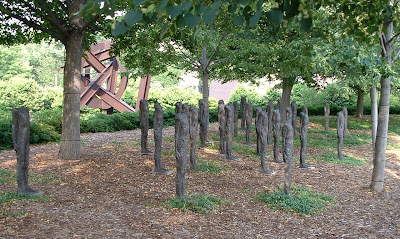Monday, March 18, 2013
Wednesday, March 6, 2013
The Tensegrity of Kenneth Snelson’s Sculpture
 |
| Kenneth Snelson, Easy Landing. Stainless steel, 1977. |
Kenneth
Snelson’s sculptures are a testimony to the interdisciplinary relationship between
science, technology, engineering, math and art.
A prime example of his work, entitled Easy Landing, is located near
the entrance to the Maryland Science Center in Baltimore City’s inner harbor.
Snelson was
inspired by physics to explore the idea of what holds matter together, and his
own ideas are creatively expressed through his open-space, linear sculptures. His
colleague, Buckminster Fuller, coined the term tensegrity (a combination of tension and integrity) to describe the
interaction between natural forces of compression and tension. These forces are of primary concern to
architects and engineers, and are also critical to Snelson’s sculpture. In 1965, Snelson acquired a patent entitled,
“Discontinuous Compression, Continuous Tension Structures,” and he has applied
these principles to many of his sculptures. Everyone can appreciate the formal
beauty of his art form, and recognize the artist’s own interest in the marvels
of science.
Reference:
Snelson,
Kenneth. “The Art of Tensegrity.” Reprinted from International Journal of Space
(accessed February 26, 2013).
Subscribe to:
Posts (Atom)
